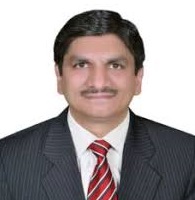The BRICS Summit 2024 was held in the Russian City of Kazan amid the backdrop of complex global challenges, from economic volatility and climate change to pressing security issues.

The summit marked a pivotal moment in BRICS’ evolution as a growing multilateral cooperation organization that is expanding and accepting new member states as voices from the global south. There is a growing ambition to reshape global governance systems to make it fairer and equatable. Together, BRICS nations now represent over 45 percent of the world’s population and nearly 35 percent of global GDP, with China and India alone contributing significantly to these figures. Accounting for around one-third of global trade volume, BRICS is not merely an alliance of emerging economies but a force advocating for the Global South. This year’s summit drew participation from 36 countries, a vibrant display of BRICS’ expanding influence as nations look for economic alternatives outside traditional Western-led frameworks.
BRICS began as an economic concept rather than a formal alliance. In 2001, economist Jim O’Neill of Goldman Sachs coined the acronym “BRIC” to represent Brazil, Russia, India, and China—four large, rapidly developing economies with potential to reshape global economic dynamics. His thesis was simple yet groundbreaking: by leveraging their growth potential, these countries could collectively become a dominant force in the global economy, rivaling the influence of traditional Western powers. The concept quickly gained traction, and by 2009, these four countries had convened their first official summit in Yekaterinburg, Russia, setting the stage for regular meetings and formal cooperation. In 2010, South Africa joined, formally transforming the group into “BRICS.” South Africa’s inclusion diversified the bloc’s geographical representation, bridging Africa into the mix and reinforcing BRICS as a coalition representing emerging economies across multiple continents.
BRICS is positioned uniquely as a bridge between developing nations and global institutions. With recent expansion in the grouping is an aim to add unity among countries in the Global South for representation and working for the common cause for development. With the recent inclusion of Iran, Egypt, Ethiopia, and the UAE, the bloc has embraced new geopolitical dynamics that strengthen its foundation and expand its influence. Through broadening its reach, BRICS aims to embody a more inclusive approach. This theme resonated throughout the summit discussions as leaders sought to champion reforms that would better align global governance with the realities of today’s interconnected world.
Apart from the summit, there were meetings on the sidelines, particularly the meeting between India’s Prime Minister Modi and China’s President Xi Jinping was considered as important. This first face-to-face interaction between the two leaders in five years marks a tentative step towards recalibrating relations. This is followed by border disputes that had long dampened bilateral ties. Both leaders appeared committed to prioritizing stability and regional security, realizing that their partnership within BRICS remains crucial for the bloc’s cohesive future. Prime Minister of India Narendera Modi’s call for consensus-driven decision-making within BRICS, particularly regarding its expansion, is India’s commitment to unity within the bloc. Indeed, inclusivity is the founding vision of BRICS as a multilateral platform that balances diverse interests while staying committed to global equity, peace, and development.
President Xi Jinping, has shared its long-term vision for China through new proposals focusing on technological advancement and sustainable development. President Xi’s announcement of initiatives such as the BRICS Artificial Intelligence Development and Cooperation Center and the establishment of several research hubs reflect China’s intent to contribute constructively to BRICS. These centers aim to foster joint research and technological innovation, addressing the unique needs of developing nations by advancing AI, deep-sea research, and digital cooperation. President Xi’s emphasis on high-quality, green development is in fact China’s vision for the growing importance of climate action, recognizing the potential of green industries and sustainable energy to drive BRICS towards a more resilient economic future.
Another important step was Russia’s push for an independent BRICS financial infrastructure. With an eye toward sanctions resilience, Russia proposed a BRICS payment messaging system and a grain exchange, designed to sidestep reliance on Western-dominated systems like SWIFT. The idea is a pragmatic response to current global financial dependencies, offering BRICS countries the flexibility to conduct trade outside the orbit of the US dollar. Similar proposal was also echoed at the SCO Summit.
The Kazan Declaration’s emphasis on fostering an interconnected yet sovereign approach to trade and financial independence aligns closely with the grouping’s goals, while also supporting broader global stability by offering alternative mechanisms for global commerce. This initiative is one part of a larger, carefully curated strategy that aligns with countries in the grouping’s interests in fortifying partnerships in agriculture and energy—sectors where mutually beneficial exchange remains viable even in the face of broader geopolitical challenges. Furthermore, the Kazan Declaration’s firm stance on multilateralism and reforms within global institutions like the United Nations Security Council and WTO highlights BRICS’ commitment to a fairer, more representative global order.
As BRICS moves forward, it is clear that its emphasis on reforms is not an attempt to supplant existing global institutions but rather a call to adapt these structures to meet contemporary needs. This year’s summit crystallized BRICS’ dual identity: a platform that bridges diverse geopolitical perspectives and a vanguard that champions the collective interests of the Global South.
Author: Muhammad Asif Noor – Founder of Friends of BRI Forum, Senior Advisor to Pakistan Research Centre at Hebei Normal University in China, Co-Founder of the Alliance of China-Pakistan Research Centres, and Senior Fellow at the Centre for CPEC Studies at Kashi University in China.
(The views expressed in this article belong only to the author and do not necessarily reflect the views of World Geostrategic Insights).







